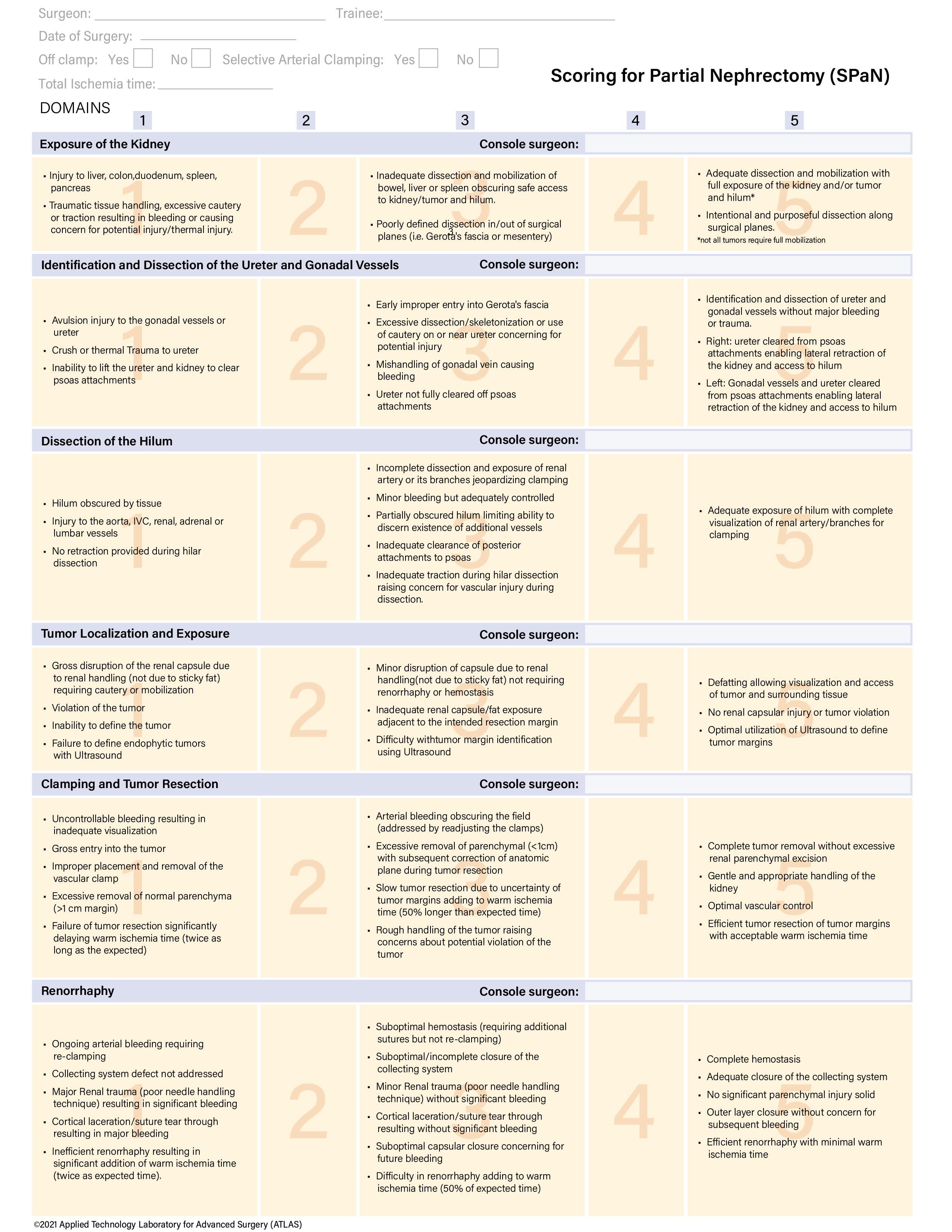Back
Poster, Podium & Video Sessions
Moderated Poster
MP50: Kidney Cancer: Localized: Surgical Therapy III
MP50-15: Development and Validation of an Objective Scoring Tool for Robot Assisted Partial Nephrectomy: Scoring for Partial Nephrectomy (SPaN)
Sunday, May 15, 2022
4:30 PM – 5:45 PM
Location: Room 225
Umar Iqbal, Philippa Doherty, Ahmed S. Elsayed, Zhe Jing, Buffalo, NY, Craig Rogers, Detroit, MI, Ronald Boris, Indianapolis, IN, James Porter, Seattle, WA, Mohammad Allaf, Baltimore, MD, Ketan K. Badani, New York, NY, Michael Stifelman, Hackensack, NJ, Jihad Kaouk, Cleveland, OH, Tomoaki Terakawa, Nobuyuki Hinata, Kobe, Japan, Ahmed A. Aboumohamed, Bronx, NY, Eric C. Kauffman, Qiang Li, Buffalo, NY, Ronney Abaza, Columbus, OH, Khurshid A. Guru, Ahmed A. Hussein, Buffalo, NY, Daniel Eun, Philadelphia, PA, Ayat Shah*, Buffalo, NY

Ayat Shah, MBBS
Mymensingh Medical College
Poster Presenter(s)
Introduction: We sought to develop a structured and objective scoring tool for assessment of robot-assisted partial nephrectomy (RAPN): Scoring for Partial Nephrectomy (SPaN).
Methods: Content development: The procedure was deconstructed into 6 domains by a multi-institutional panel of 10 expert robotic surgeons. Performance on each domain was represented on a Likert scale of 1 (worst) to 5 (ideal), with specific descriptions of anchors 1, 3 and 5. Content validation: The Delphi methodology was utilized to achieve consensus about the description of each anchor for each domain. Each description was assessed in terms of appropriateness of the skill assessed, objectiveness, clarity and unambiguity of the wording used. The content validity index (CVI) of =0.75 was set as cut-off for consensus. Reliability: 15 de-identified videos of RAPN were utilized to determine the inter-rater reliability using linearly weighted percent agreement, and Construct validation of SPaN was described in terms of median scores (inter quartile range) and odds ratios.
Results: The expert panel reached consensus (CVI = 0.75) after 2 rounds on all aspects for all anchors. Consensus was achieved for 36 (67%) statements in the first round and 18 (33%) after the second round. The final six-domain SPaN included: Exposure of the kidney; Identification and dissection of the ureter and gonadal vessels; Dissection of the hilum; Tumor localization and exposure; Clamping and tumor resection; and Renorrhaphy (Figure 1). The linearly weighted percent agreement was > 0.75 for all domains (Table 1a). Attending surgeons achieved higher scores for domain 2 (Identification and localization of the gonadal vessels and the ureter) (4 vs 3, OR 1.16, 95%CI 0.73-1.85) and domain 6 (Renorrhaphy) (5 vs 4; OR 1.73; 95%CI 0.89-3.36) but did not reach statistical significance (Table 1b).
Conclusions: We developed and validated SPaN as a structured, reliable and procedure-specific tool that can objectively assesses technical proficiency for RAPN.
Source of Funding: None


Methods: Content development: The procedure was deconstructed into 6 domains by a multi-institutional panel of 10 expert robotic surgeons. Performance on each domain was represented on a Likert scale of 1 (worst) to 5 (ideal), with specific descriptions of anchors 1, 3 and 5. Content validation: The Delphi methodology was utilized to achieve consensus about the description of each anchor for each domain. Each description was assessed in terms of appropriateness of the skill assessed, objectiveness, clarity and unambiguity of the wording used. The content validity index (CVI) of =0.75 was set as cut-off for consensus. Reliability: 15 de-identified videos of RAPN were utilized to determine the inter-rater reliability using linearly weighted percent agreement, and Construct validation of SPaN was described in terms of median scores (inter quartile range) and odds ratios.
Results: The expert panel reached consensus (CVI = 0.75) after 2 rounds on all aspects for all anchors. Consensus was achieved for 36 (67%) statements in the first round and 18 (33%) after the second round. The final six-domain SPaN included: Exposure of the kidney; Identification and dissection of the ureter and gonadal vessels; Dissection of the hilum; Tumor localization and exposure; Clamping and tumor resection; and Renorrhaphy (Figure 1). The linearly weighted percent agreement was > 0.75 for all domains (Table 1a). Attending surgeons achieved higher scores for domain 2 (Identification and localization of the gonadal vessels and the ureter) (4 vs 3, OR 1.16, 95%CI 0.73-1.85) and domain 6 (Renorrhaphy) (5 vs 4; OR 1.73; 95%CI 0.89-3.36) but did not reach statistical significance (Table 1b).
Conclusions: We developed and validated SPaN as a structured, reliable and procedure-specific tool that can objectively assesses technical proficiency for RAPN.
Source of Funding: None



.jpg)
.jpg)